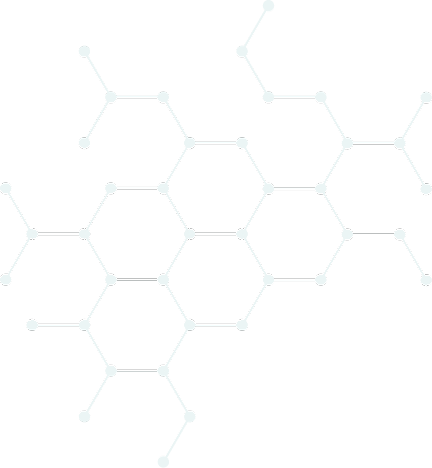Acute Primary Anterior Cruciate Ligament Repair
The anterior cruciate ligament (ACL) is a fundamental anatomical structure frequently implicated in sports-related injuries, crucial for maintaining stability in the knee joint. Beyond its role in limiting abnormal knee movements, the ACL also acts as a proprioceptive sensory organ, regulating muscle contractions to maintain balance. This distinction between anterior cruciate ligament repair and reconstruction surgery becomes apparent in studies showing comparable outcomes, yet superior balance in patients who undergo repair.
The inception of anterior cruciate ligament repair publications dates back to the 1980s, initially yielding favorable results. However, over time, issues such as knee stiffness and ligament failure surfaced, leading to the abandonment of this method in favor of reconstruction as the gold standard. Upon retrospective examination, the failure of the repair approach can be attributed to its universal application to all tear types, inadequate surgical techniques, and inappropriate postoperative rehabilitation protocols.
Following an anterior cruciate ligament injury, the torn segment of the ligament typically becomes affixed within the joint, often observed during arthroscopic procedures at various locations like the upper femur, posterior cruciate ligament, notch area, and Hoffa fat pad anteriorly in the knee. In cases where the ligament remains unattached, arthroscopy may reveal its eventual disappearance (lysis). Histological investigations on patients with ligament adhesions have shown that the mechanoreceptors within the ligament's tissue remain viable and intact. Essentially, the ligament stump endeavors to sustain the ACL's vitality by adhering within the joint, a process facilitated during repair to ensure proper placement and alignment of the stump.
Which Anterior Cruciate Ligament Tears Can Be Repaired?
Anterior cruciate ligament injuries are categorized based on the location along the length of the ligament where the tear occurs. Tears that manifest at the point of attachment to the bone at the uppermost part are classified as Type 1. In cases where a rupture leaves a small stump in the upper region, it is designated as Type 2; progressing further down to the lower regions, it is categorized as Type 3 and 4. Predominantly, approximately 80% of anterior cruciate ligament ruptures transpire in the upper segments (Type 1 and 2). Regrettably, if the ligament tears in the middle, constituting around a 20% likelihood, it is deemed irreparable.
Anterior cruciate ligament repair can be applied to Type 1 and 2 tears. In type 3 and 4 tears, reconstruction should be performed instead of repair. A good MRI image taken early after the injury will give us information about the level of the tear and whether it is suitable for repair.
When Should Anterior Cruciate Ligament Repair Be Performed?
The ideal patient for repair is Type 1 and 2 tears that are
repaired within the first 3 weeks (maximum 6 weeks) after the injury. If the
repair is done early, its success will increase accordingly. Early surgery also
gives us the chance to perform more meniscus repairs. Accompanying meniscus
injuries become more fragmented during the time spent for reconstruction and
sometimes become irreparable.
It was previously thought that early surgery for anterior
cruciate ligament injury would result in stiffness in the joint called
arthrofibrosis. Recent studies have shown that early surgery does not cause
joint stiffness.
Does Age Matter in the Patient Who Will Have Anterior Cruciate Ligament Repair?
There is no specific age limit for anterior cruciate ligament repair. It may be preferred in patients who are suitable for reconstruction. It offers more benefits than reconstruction in pediatric patients as it avoids damage to the growth plate.
It has been noted that the rates of re-rupture post-repair are higher in individuals under the age of 20 in comparison to other age brackets. This is attributed to the challenges faced by this age group in achieving adequate rehabilitation, leading to an earlier return to sports. Typically, the average return to sports post-repair is estimated at 9 months, whereas in this particular age group, individuals tend to resume sports activities within 4-5 months.
What are the Anterior Cruciate Ligament Repair Techniques?
There are 3 methods for anterior cruciate ligament repair.
- Dynamic intraligamentary stabilization (Implants applied
with the second surgery must be removed)
- Augmentation with internal brace
- Primary anterior cruciate ligament repair with suture
anchor (the most commonly used method in practice)
Recovery After Acute Primary Anterior Cruciate Ligament Repair
After undergoing anterior cruciate ligament reconstruction, the patient is required to utilize a knee brace for a duration of 4 weeks. We conduct weekly assessments to make necessary angle adjustments and provide detailed instructions regarding the prescribed movements. It is imperative for our patients to rely on crutches and refrain from placing any weight on the operated leg for the initial 6 weeks post-surgery. The anticipated timeline for a complete return to sporting activities following the surgical intervention should be considered as an average of 9 months.
In conclusion;
The timeliness of surgical intervention following anterior cruciate ligament injuries significantly impacts treatment outcomes. Conducting surgery promptly post-injury enhances the likelihood of treatment success by enabling the early management of associated injuries such as meniscus damage. This approach, which entails a less invasive procedure than reconstruction, results in reduced post-operative pain for the patient and eliminates the need for ligament grafts from alternative sources.
The preservation of the body's original tissues is a paramount objective, particularly in the context of retaining the natural integrity of the anterior cruciate ligaments. Therefore, seeking prompt medical consultation is imperative to ensure the preservation of these vital structures.
 Türkçe
Türkçe
 Arabic
Arabic


